Keeping up with the Newbuilds
by Patrick Webb
@ConductorPat
Move over Kardashians, THIS is a TV show I’d watch! In all seriousness, it may be—understandably—hard to keep up with every new build project going on. According to New Build Steam, who follow new build organizations and publish online articles on them, 20 new standard gauge steam locomotives are under construction, while three more are planned, along with five new diesels. This is just in the UK. In the US, there’s the PRR T1, currently the only standard gauge new build steam locomotive project in the US.
Some groups may get more attention than others, such as the P2 Steam Locomotive Company, who are building a LNER P2 2-8-2 mikado. This is because they’re a spin off organization from the A1 Steam Locomotive Trust, who built and maintain Tornado, the first 21st Century steam locomotive completed. For this article, I will highlight four organizations, show their goals, and depict their most current progress.
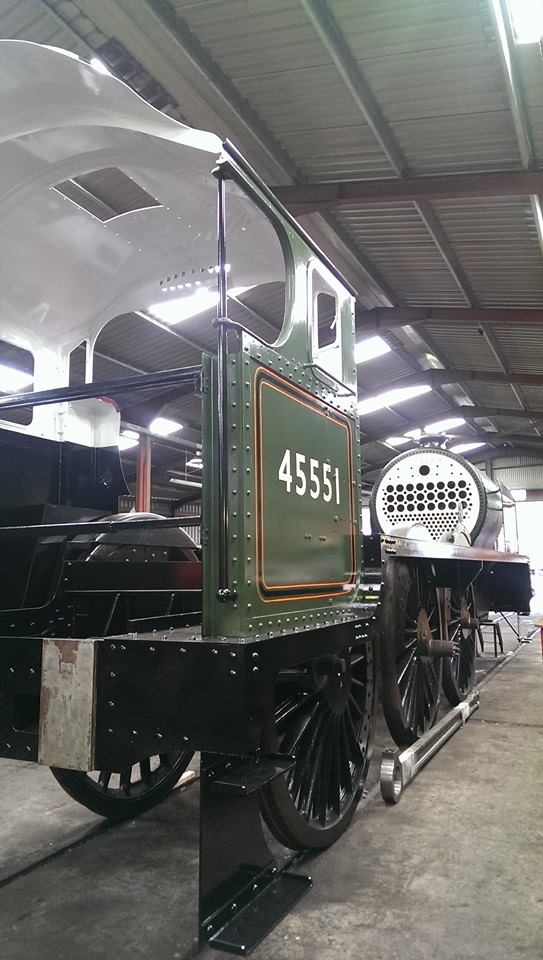


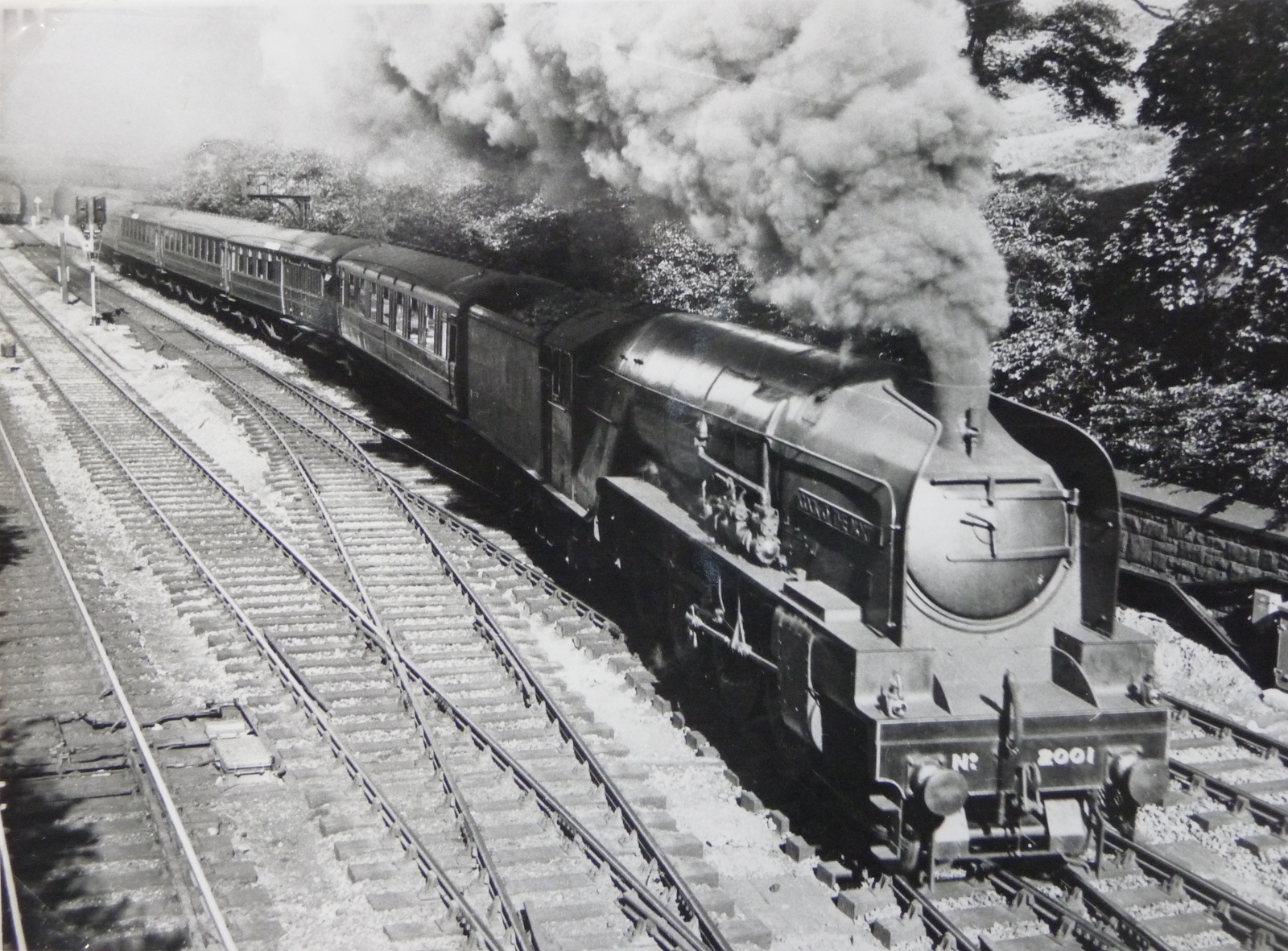

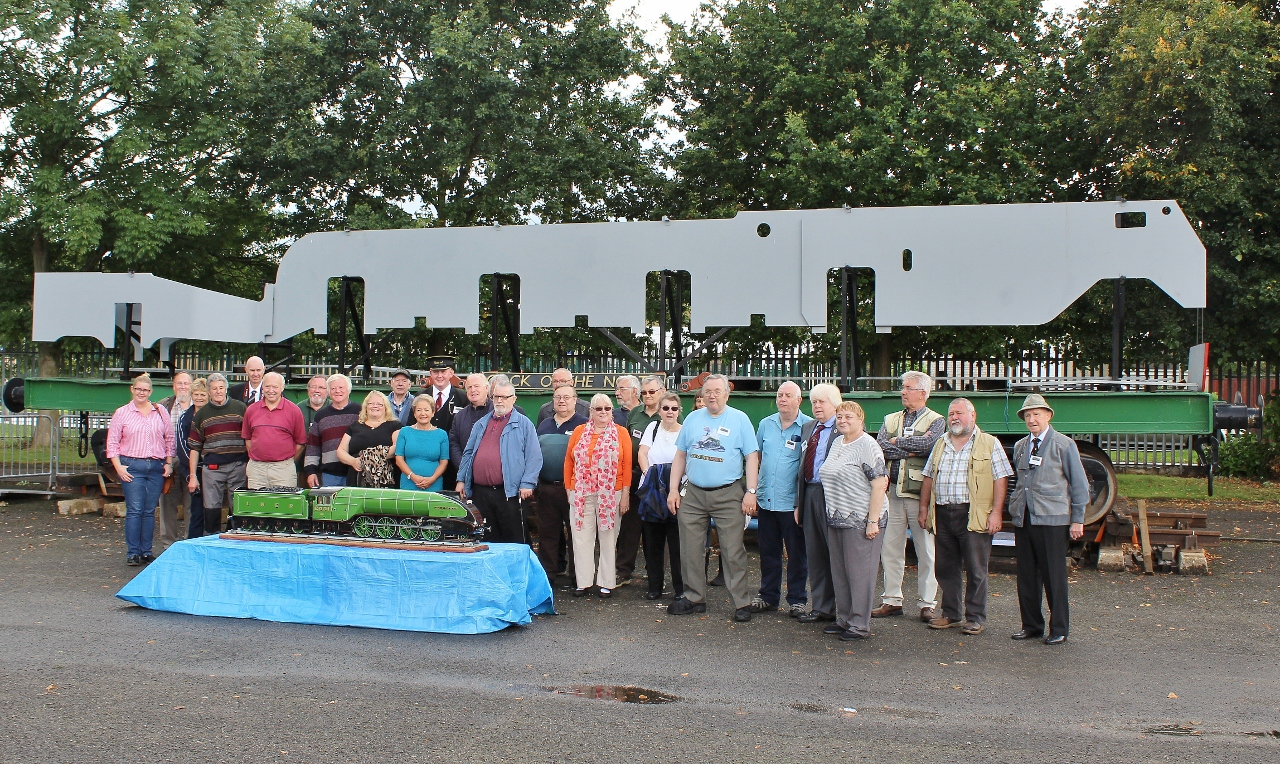
PRR T1 Trust






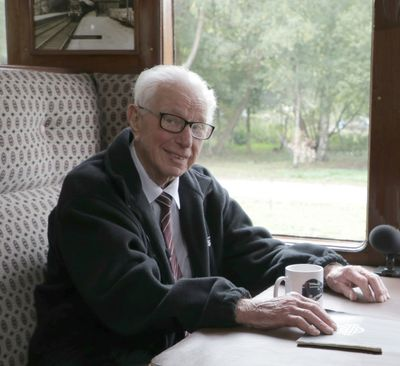
Special thanks to Secretary Hoseason and Dr. Noble for their interviews. Special thanks also to the LMS-Patriot Project, The Doncaster P2 Locomotive Trust, The T1 Trust and The Ivatt-Diesel Recreation Society for permission to use their photographs.
Some groups may get more attention than others, such as the P2 Steam Locomotive Company, who are building a LNER P2 2-8-2 mikado. This is because they’re a spin off organization from the A1 Steam Locomotive Trust, who built and maintain Tornado, the first 21st Century steam locomotive completed. For this article, I will highlight four organizations, show their goals, and depict their most current progress.
The LMS-Patriot Project
The Unknown Warrior under construction, painted in British Railways Brunswick Green. Members of the LMS-Patriot Project will vote on what colors The Unknown Warrior wears in service. © LMS-Patriot Project, used with permission.
Launched in April 2008, the same year Tornado was finished, the LMS-Patriot Project’s goal is to build a new member of the LMS Patriots, nicknamed Baby Scots because they were similar to the earlier Royal Scot class. The 4-6-0 ten-wheelers, according to the LMS-Patriot Patriot Project’s website, were withdrawn between 1960—1962, all were scrapped. No. 5551 will be named The Unknown Warrior, selected by a competition in the Steam Railway Magazine, in honour of all who have died in military service since World War 1.
According to the LMS-Patriot Project’s website, as of December 20th, 2018, The Unknown Warrior’s boiler has been trial-fitted to the frame. The LMS-Patriot Project is currently working on The Unknown Warrior’s lubrication pipework, led by Nigel Day, along with the chassis, boiler and tender frame, and are “considering the options to get ‘The Unknown Warrior’ into steam,” according to a recent Facebook post.
On March 1st, 2019, the LMS-Patriot Project announced they were launching a coach appeal. Many steam locomotives that run on the mainline in the UK, such as Tornado, have support coaches that are used, according to the A1 Steam Locomotive Trust’s website, to house crews and tools, as the infrastructure for steam in the UK has decreased over the years. Recently, a BR Mk1 BSK coach became available for purchase for £100,000, approximately $132,000 in US currency.
“Even if we decide this vehicle is not for us, we still need to launch this vital appeal for funding to acquire a suitable vehicle,” The LMS-Patriot Project said on their announcement post. 
A photo of the Support Coach in LMS-Patriot Project colors. © LMS-Patriot Project, used with permission.
A work order has been sent out for The Unknown Warrior’s tender. Riley and Son, who maintain the famous LNER A3 Flying Scotsman for the National Railway Museum, are in talks with the LMS-Patriot Project. The Patriot Project is waiting for a response from The Princess Royal Class Locomotive Trust and Railway Forgings and Castings; Tyseley Locomotive Works announced they will not lobby for the tender order.
5551 The Unknown Warrior with the boiler fitted, borrowing the tender from LMS Crab No. 13065, another Fowler design. In service both locos used the same Fowler tender. © LMS-Patriot Project, used with permission.
On July 5, 2019, the LMS Patriot-Project announced they had chosen the Princess Royal Locomotive Class Trust (PRCLT) to not just complete The Unknown Warrior’s Tender, but finish the entire locomotive. The PRCLT, according to their website’s Mission Statement page, “exists to promote interest in the Stanier Pacific steam locomotives of the London Midland and Scottish Railway and the Standard Class 4 Tank locomotives of British Railways.” PRCLT own and maintain 4 standard gauge steam locomotives, including LMS Princess Royal Class Princess Margaret Rose.
The PRCLT was chosen over Riley & Sons and Railways Forgings & Castings, according to the Patriot-Project’s announcement, which also thanked the non-selected bidders, saying “The decision is one which is not a criticism of their ability to do a first class job, rather a recognition that the PRCLT bid better met our unique requirements.”
Together, the LMS-Patriot Project and Princess Royal Locomotive Trust to “the highest possible standard and for mainline running.” If you wish to support The LMS-Patriot Project you can donate online here: www.lms-patriot.org.uk/civicrm/contribute/transact?reset=1&id=12
Doncaster P2 Locomotive Trust
The LNER P2’s, according the LNER Encyclopedia, were designed by Sir Nigel Gresley to haul express trains on the steep Edinburgh to Aberdeen mainline. They were also the largest passenger locomotives on the LNER, and one of few 2-8-2 Mikado classes in the UK. The P2’s were rebuilt by Sir Nigel Gresley’s successor, Edward Thompson, into 4-6-2 Pacifics which were considered a failure by most enthusiasts. However, according to a recent episode of the Podcast Railway Mania, which included LNER historian Simon AC Martin, the rebuilt P2's were more reliable in their new form than original (You can listen to the episode here: www.youtube.com/watch?v=AsY6AW5Ts08). The rebuilt P2's, reclassified as A2/2's, were withdrawn and scrapped from 1959—1961 by British Railways, none were preserved.
Cock O’ the North, renumbered British Railways No. 60501, in the scrap line at Doncaster Works, where she was built, May 1960. © RCTS Yeadon Collection, used with permission of the Doncaster P2 Locomotive Trust.
The UK has not one, but two new LNER P2’s being built. One, as mentioned earlier, will be built by the P2 Steam Locomotive Company, the other by the Doncaster P2 Locomotive Trust.
The Doncaster P2 Locomotive Trust estimate the cost will be over £5m. The Trust is working with Heritage Doncaster to show the construction at the Doncaster Culture and Learning Centre, which will open in 2020. Despite building locomotives of the same class, the two projects are very different.
Cock O’ the North in its original form, which is how No. 2007 Prince of Wales will appear when completed. © RCTS Yeadon Collection, used with permission of the Doncaster P2 Locomotive Trust.
One difference is in the naming and numbering system. The P2 Steam Locomotive Company are numbering their P2 as the newest member of the class, No. 2007, Princes of Wales. In contrast, the Doncaster P2 Locomotive Trust’s P2 will be named and numbered after the prototype, No. 2001, Cock O’ the North.
Another difference is in the locomotives’ appearances. Prince of Wales will appear as the first two locomotives were built, with curved smoke deflectors. Cock O’ the North will be built with A4 style streamlining, looking like an enlarged Mallard, the world’s fastest steam locomotive; the original Cock O’ the North was rebuilt in this form in September, 1937.
A colorized photo showing Cock O’ the North in applegreen, showcasing how the replica Cock O’ the North will look when completed. © RCTS Yeadon Collection, used with permission of the Doncaster P2 Locomotive Trust.
A major difference is in the valve gear. Prince of Wales will use rotary cam valve gear, which the first P2s originally had. Cock of the North will use walschaerts valve gear, which the original Cock of the North was converted to in September, 1937, because the Doncaster P2 Locomotive Trust decided the original valve gear was unreliable.
Currently, only the frames for Cock of the North have been constructed. Those who want to help support the project can sponsor a part or buy merchandise such as a print showing the three forms of Cock O’ the North. There are also clubs to join including The Cock O’ The North Club or Denison Club.
On May 27, 2019, the Doncaster P2 Locomotive Trust announced on Facebook that thanks to the Denison and COTN club, can now begin machining the frames, in particular drilling the necessary holes, and are closer to putting the frames on display. Work recently began on the Doncaster Library and Museum where Cock O’ The North’s frames will be displayed.
The Doncaster P2 Locomotive Trust are focusing most of their efforts currently on a museum construction, the progress can be followed via their Facebook page.
The Doncaster P2 Locomotive Trust are focusing most of their efforts currently on a museum construction, the progress can be followed via their Facebook page.
Members of the Doncaster P2 Locomotive Trust Stand with the completed frames at the unveiling ceremony at the South Yorkshire Aircraft Museum on September 9th, 2017, along with a model of Cock of the North, showing how No. 2001 will look when completed. © Doncaster P2 Locomotive Trust, used with permission.
PRR T1 Trust
Cover art of the T1 Trust’s website, showing No. 5550 when complete. © T1 Trust, used with permission.
The PRR T1 class, according to Classic Streamliners, were a class of 52 4-4-4-4 Duplex steam locomotives, with the first of the class being built in 1942, and production members built from 1945—46. The T1’s streamlining was designed by world renown Richard Lowey. The T1s were the last steam locomotives that the Pennsylvania Railroad built, and were built to replace double heading PRR K4 Pacifics, which were beginning to show their age.
The PRR T1s were plagued with wheel slip at high speed and dieselization, which began on the PRR in 1948. The wheelsipping has been the most controversial part of the T1’s legacy. However, this has often been blamed on the PRR not properly training crews used to the smaller K4s.
In service the PRR T1s were built to reach 100 mph, thanks to their poppet valve gear. However, high speeds caused serious wear and tear on the locomotives. One technician claimed he clocked a T1, on a train running late, at 140 mph; however, this claim is often debated.
Despite being very new, the PRR T1s were withdrawn in 1952, and were replaced by diesels. From 1951—1955, the PRR sent the T1s for scrap. In 1956, according to the PRR T1 Trust, the last surviving T1 No. 5543 was scrapped, leaving the class extinct.
T1 No. 5543 on the scrap line, 1956. Image Credit: Art Duley, © PRR T1 Trust, used with permission.
The PRR T1 Trust’s goal is to complete a new PRR T1, No. 5550, which is no easy order to fill. The PRR T1 Trust is currently the only standard gauge new build group in the US, inspired by the A1 Steam Locomotive Trust’s completion of Tornado, which is referenced multiple times on the T1 Trust’s FAQ page. The T1 is also a complicated locomotive: standing at 16’ 6”, it is a rigid-framed duplex locomotive known for wheel slipping with inexperienced crews.
So why build such a complicated locomotive? The T1 Trust explain on their FAQ page that they are Pennsylvania Railroad and T1 fans, and the T1s had the most range capability of the PRR duplex locomotives; No. 5550 will be able to travel around curves that 2-8-4 berkshire Nickel Plate 765 can traverse. Also, the T1s had many unique parts, such as Franklin poppet valves, Duplex drive, and Loewy styling, which helps the locomotive stand out when asking for donations.
If the T1 Trust is successful, No. 5550 will be the only steam locomotive in the US with poppet valve gear, and the only rigid frame duplex locomotive in the world. No. 5550 will have a similar running range to berkshire Nickel Plate 765.
A question that often comes up is why not build a proven design, such as a NYC streamlined J class Hudson or a Berkshire. The T1 Trust explained that there are already other 4-6-4 and 2-8-4 projects going on, and they do not want to pull resources from them. There is also the potential for learning, “putting to rest,” the FAQ page explains, questions such as how difficult it was to maintain a T1, if they “could actually attain the speeds they were attributed to,” and know what the design was capable of.
No. 5550 will have subtle differences from the original T1s. No. 5550 will likely have a wheel slip alarm to ensure that wheel slipping is not a concern, along with improvements to the spring rigging, which was part of the T1’s wheelslip problem. No. 5550 is also expected to have Franklin Type B valve gear, similar to sibling No. 5500, which is easier to maintain than the original Franklin Type A valve gear.
No. 5550 will be equipped with controls necessary for the railroads they will operate on, and the T1 Trust is investigating the possibility of incorporating Positive Train Control, or PTC. No. 5550 may run at Steamtown in Pennsylvania, the Steam Railroading Institute in Owosso, Michigan, and The Cuyahoga Valley Scenic Railroad in Ohio.
No. 5550 is expected to be capable of running at an average speed of 79 mph on Class 1 Railroads. If allowed on Amtrak’s system, the T1 Trust hope to run No. 5550 at 85—110 mph.
One question that often comes up regarding No. 5550 is whether or not the T1 Trust will be attempting to break the LNER A4 Mallard’s speed record of 126 mph, which has stood since 1938. Dr. Noble, the T1 Trust Chairman, stated the T1 Trust wants to see what No. 5550 is capable of.
“There is at least one credible account of a T1 in service reaching a speed of 141 mph,” Dr. Noble explained. “We are not gunning for Mallard per se, however we do feel fairly certain that when built, PRR T1 #5550 could set a new world speed record for steam.”
Chart showing the completed sections of 5550. © T1 Trust, used with permission.
Currently, 29.2% of construction has been completed, along with the purchase of a PRR tender from the New York Railroad Historical Society, and $700,000 raised. According to the T1 Trust’s website, No. 5550 is expected to cost approximately $10 million. This estimate is based off of No. 5550’s weight, the original cost plus inflation, lost skills and Tornado’s construction.
Tender acquired for 5550 from the New York Railroad Historical Society. © T1 Trust, used with permission.
On New Year’s Eve 2018, the T1 Trust announced that the firebox doors had been completed in Maryland. Sections of the firebox are available for sponsoring at $100 each. Dr. Noble stated the T1 Trust obtained their largest part in 2018, “the entire cylindrical portion of the boiler for 5550 has been completed,” weighing 25,000 pounds, making the boiler now 18’ 2” long.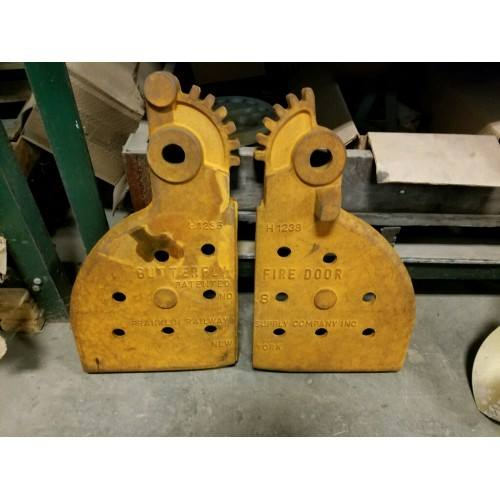
The Recently finished firebox doors. © T1 Trust, used with permission.
On March 24, 1029, The T1 Trust announced that they had placed an order for the front tube boiler sheet, “an essential component of the boiler” as the announcement states, calling it “the beating heart of the new T1.” Continental Fabricators in St. Louis, Missouri are contracted to build the front tube boiler sheet. When completed the front tube boiler sheet will be able to withstand boiler pressure of over 300 PSI.
The T1 Trust has two original parts from scrapped T1s: a whistle, and most recently a marker light found by the late Art Audely, who collected it from No. 5543 while it awaited scrapping. The marker light was purchased by a Trust member and donated to the T1 Trust.
People who wish to support the project should check out the T1 Trust’s fundraising center. There are many pieces of merchandise to buy, such as a No. 5550 number plate, and instructions for a Lego set for a T1. There are also options to sponsor drawings, parts such as the boiler or wheels, and to join the Founder’s Club.
Ivatt Diesel Recreation Society
The London, Midland, and Scottish Railways, or LMS, built the first mainline diesels in England in 1947, setting the ground for future English diesels. No. 10000 and 10001 were designed by H. G. Ivatt, who also designed steam locomotives: according to Andrew Hoseason,
Secretary & Publicitist of the Society, these were the “direct ancestors of classes such as the class 40s [and] 50s,” and forerunners of English Electric produced classes such as the 31s and 37s.
The Twins in service, wearing their original black and silver livery. They would later wear Brunswick Green until withdrawn. Courtesy IDRS. See more at: www.lms10000.co.uk
The Twins, Mr. Hoseason explained, were in service with modifications made, until they were withdrawn in 1967 and were the first diesels considered for preservation. Unfortunately, The Consultative Panel For The Preservation Of British Transport Relics felt the cost to restore them to their original condition was too expensive, so both units were scrapped in 1968. General consensus in the UK at galas is that No. 10000 should have been preserved.
Founded in 2011, The Ivatt Diesel Recreation Society aims to build a replica of No. 10000 as close to the original as possible, costing £630,000 or $816,575 US dollars. The Society’s President, Stanley Fletcher, actually worked on the original locomotives, clocking in 150,000 hours as a Commissioning Engineer from English Electric.
No. 10000 will be built using parts from existing locomotives, such as from Class 58 58022, a descendant of No. 10000. Other parts will be taken from Class 20s and Class 37s, which will only be available for a short time as these first generation diesels are withdrawn.
58022 at Peak Rail, a preserved railway in the UK. 58022’s biggest contribution to No. 10000 will be its frame, though other parts will be used. Courtesy IDRS. See more at: www.lms10000.co.uk
Mainline additions would require alterations from the original design that would not justify the additional cost, so No. 10000 will only run on heritage railways. “The intention is that [10000] will be capable of being hauled around the rail network or transferred via specialised low loader,” Mr. Hoseason explained; “there are a couple of companies out there who have the kit to transfer large locomotives.”
On February 7th, 2019, the National Railway Museum in York donated several parts to the Society. These include vacuum hoses and master controllers from a Class 40, which The Society described as ideal for No. 10000.
Recently, the Society announced they had acquired a set of bogies from the EM2 Locomotive Society. The Society ran a flash fundraising campaign to cover the cost of the bogies (estimated to cost £8,500), which raised £17,000.
On July 3, 2019, the Society announced they had purchased a set of MV 146 traction motors, which will fit in the EM2 bogies. The traction motors, which are located in Holland, are in good condition because they have been stored inside, according to an email update. While the motors will need to be shipped to the UK, the Society predicts they will save the project around 10 thousand pounds.
The Society also announced a new fundraiser: the President’s Appeal, which aims to raise £100,000 (approximately $129,155.50 US currency), by President Pletcher’s March 2020 birthday. Raffle tickets for the President’s Appeal are now available on The Ivatt-Diesel Recreation Society’s website.
President Stanley Fletcher, who worked with the twins in service. Courtesy IDRS. See more at: www.lms10000.co.uk
The public can help by donating monthly to the Ivatt-Diesel Recreation Society to give them a regular income. The Society also hopes to find an owner of a spare industrial unit to act as the Society’s long-term base of operations. The public can also join the Co-Co club (a reference to the name given to No. 10000’s wheel base, with two separate pairs of 6 driving wheels), for £5 a month, every three months there will be a drawing where the winner can receive 50% of the prize fund, with the rest going towards No. 10000’s construction.
Another appeal the public can help with is the “Buy a Metre Appeal,” to help the Society save motor IH1863 which can be used for No. 10000, before the building it is currently housed in is demolished and the. The cost to move the motor is £3,000 or around $3,756.60 (US). Anyone who donates to the “Buy a Metre Appeal” will have their name on a plague on the side of No. 10000.
Conclusion
New build locomotives will soon be hauling excursion trains on the mainline and heritage railways, giving older locomotives a rest. Whether or not all of these projects will succeed remains to be seen. The J50 group, who had plans to build a new LNER J50 0-6-0 tank engine, announced on Facebook they were shutting down and donating all funds to the construction of the Prince of Wales and the model display to the Midland & Great Northern Society.
What is certain is that new builds are becoming more popular and important for preservation, filling the gap of lost classes for all generations.
Special thanks to Secretary Hoseason and Dr. Noble for their interviews. Special thanks also to the LMS-Patriot Project, The Doncaster P2 Locomotive Trust, The T1 Trust and The Ivatt-Diesel Recreation Society for permission to use their photographs.
If you’d like to learn more about the organizations in this article, or perhaps go and donate to them, check out their websites, listed below in alphabetical order. Make sure to check them out on their social media as well.
The T1 Trust https://prrt1steamlocomotivetrust.org/index.php Facebook: Pennsylvania Railroad T1 Steam Locomotive Trust
Be sure to check out the podcast Railway Mania, Episode 5 "Edward Thompson, Hero or Villain?" goes into more detail about the P2 rebuilds and Edward Thompson's career. www.youtube.com/watch?v=AsY6AW5Ts08

No comments:
Post a Comment